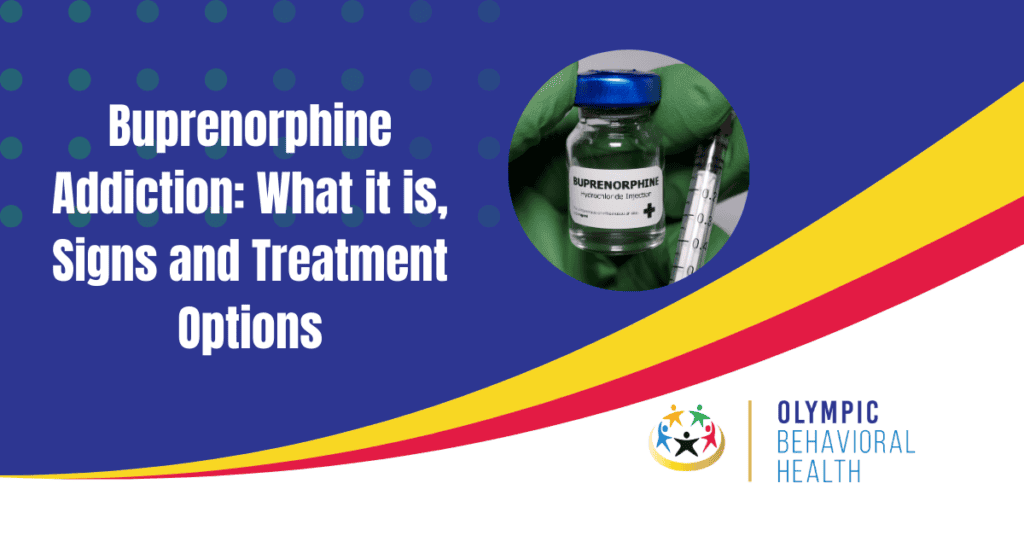What is Buprenorphine and what is it used for?
Buprenorphine is used as medication for opioid addiction treatment. It binds to receptors in the brain, decreasing withdrawal symptoms and cravings. It comes in various forms: sublingual tablets, sublingual film, and implants. The sublingual forms dissolve under the tongue and get absorbed into the bloodstream.
How Does Buprenorphine Addiction Develop?
Buprenorphine addiction develops due to various factors that contribute to its addictive properties. Understanding the development of buprenorphine addiction is crucial for effective intervention. Here are the key factors involved:
1. Pharmacological properties: Buprenorphine, a potent opioid medication used for pain management and treating opioid addiction, binds to brain opioid receptors, providing pain relief. However, its high potency and long-lasting effects increase the risk of misuse and addiction.
2. Tolerance and dependence: Regular use of buprenorphine leads to tolerance, requiring higher doses for the same effects. Continued use also results in physical dependence, leading to withdrawal symptoms upon abrupt discontinuation.
3. Psychological factors: Buprenorphine addiction can develop due to various psychological reasons. Some individuals may use it to cope with stress, emotional pain, or self-medicate for mental health issues.
4. Co-occurring disorders: Many individuals with buprenorphine addiction also have underlying mental health disorders, such as depression, anxiety, or post-traumatic stress disorder (PTSD). These disorders contribute to the development and maintenance of addiction.
5. Environmental factors: Environmental influences, such as peer pressure, drug-using environments, easy access to buprenorphine, and lack of supportive social networks, play a significant role in the initiation and progression of addiction.
6. Genetic predisposition: Certain genetic factors increase an individual’s vulnerability to buprenorphine addiction. Genetic variations in brain reward pathways and drug metabolism can influence the likelihood of addiction.
It is important to note that not everyone who uses buprenorphine will develop an addiction. However, understanding the factors involved in its development can guide the development of prevention and treatment strategies for this growing concern.
Physical and Behavioral Symptoms of a Buprenorphine use and addiction
| Physical Symptoms | Behavioral Symptoms |
|---|---|
| Constipation | Increased secrecy |
| Weight loss | Changes in social circles |
| Insomnia | Neglecting responsibilities |
| Decreased libido | Loss of interest in activities |
| Slowed reflexes | Financial problems |
| Respiratory issues | Mood swings and irritability |
| Headaches | Continued use despite negative consequences |
| Sweating | Depression |
| Nausea and vomiting |
Short term and Long Term Side Effects of Buprenorphine Use
Short-Term Side Effects of Buprenorphine use
The use of Buprenorphine result Nausea and vomiting, Dizziness, Constipation, Sweating and Sleep disturbances
- Nausea and vomiting: Some individuals may experience discomfort and unpleasantness shortly after consuming Buprenorphine.
- Dizziness: Buprenorphine has the potential to cause dizziness, which can impede balance and coordination. Therefore, caution must be exercised during activities that require alertness.
- Constipation: Buprenorphine can slow down the digestive system and lead to constipation. To prevent this, it is advisable to drink ample fluids and consume a high-fiber diet.
- Sweating: Excessive sweating, particularly at higher doses, is a possible side effect of Buprenorphine . This can be bothersome and may require adjustments to the dosage.
- Sleep disturbances: Some individuals may encounter sleep disturbances, such as insomnia or changes in sleep patterns, while taking Buprenorphine . It is crucial to communicate any sleep-related issues to your healthcare provider.
Long Term Side Effects of Buprenorphine use
Long Term Side Effects of Buprenorphine use are, Hormonal Imbalances, Liver Damage, Respiratory Issues, Cognitive Impairment, Dental Problems, Gastrointestinal Disorders and Mood Disorders
1. Hormonal Imbalances: Buprenorphine disrupts hormone balance in the body, leading to irregular menstrual cycles in women and decreased testosterone levels in men.
2. Liver Damage: Prolonged and high-dose use of Buprenorphine strains the liver, causing inflammation and scarring.
3. Respiratory Issues: Buprenorphine use slows down breathing rate and lead to chronic respiratory problems, such as difficulty breathing and decreased lung function.
4. Cognitive Impairment: Long-term Buprenorphine addiction results in problems with memory, attention, and overall cognitive function.
5. Dental Problems: Buprenorphine can negatively affect oral health, causing gum disease, tooth decay, and dry mouth.
6. Gastrointestinal Disorders: Buprenorphine addiction contributes to the development of gastrointestinal disorders, including constipation, nausea, and stomach pain.
7. Mood Disorders: Long-term use of Buprenorphine has been linked to the development of mood disorders, such as depression and anxiety, which can significantly impact overall quality of life.
Treatment Options for Buprenorphine Addiction
Seeking effective treatment options is crucial when dealing with buprenorphine addiction. In this section, we will explore various approaches that can help individuals overcome this addiction and regain control of their lives. From detoxification to inpatient rehabilitation, outpatient treatment, and counseling and therapy, we will delve into the different sub-sections that offer hope, guidance, and support on the journey to recovery. Let’s uncover the pathways to a healthier, addiction-free future.
- Detoxification
- Inpatient Rehabilitation
- Outpatient Treatment
- Counseling and Therapy
Preventing Buprenorphine Addiction
Buprenorphine addiction is a serious concern that demands our attention. In this section, we will explore effective strategies for preventing this addiction. From safe prescription practices to educational programs and community support, we’ll uncover the key elements that play a vital role in tackling this issue head-on. So, let’s delve into the world of prevention and discover how we can safeguard individuals from the harmful effects of buprenorphine addiction.
Safe Prescription Practices
Safe Prescription Practices are essential for the use of buprenorphine to prevent addiction and ensure effective treatment. Here are some important considerations to keep in mind:
- Lawful prescriptions: Buprenorphine should only be prescribed by qualified healthcare professionals who are authorized. This helps ensure appropriate and justified prescribing.
- Accurate patient assessment: Before prescribing buprenorphine, healthcare providers should thoroughly assess the patient’s medical history, medications, and potential contraindications. This minimizes the risk of adverse effects and drug interactions.
- Individualized treatment plans: Each patient’s treatment plan should be tailored to their specific needs. Factors such as addiction severity, co-occurring disorders, and overall health should be considered when determining dosage and duration of treatment.
- Proper dosing and administration: Healthcare providers should prescribe buprenorphine at the lowest effective dose to minimize dependence and misuse. Patients should be educated on correct dosage and administration methods.
- Regular monitoring: Follow-up appointments should be scheduled to monitor the patient’s progress, assess treatment response, and make dosage adjustments if needed. This ensures the medication is working effectively and identifies early concerns.
Implementing safe prescription practices significantly reduces the risk of buprenorphine addiction and enhances treatment safety and effectiveness. By following these practices, healthcare providers play a crucial role in supporting patients’ recovery.
Get help for your Buprenorphine Addiction in West Palm Beach
If you’re grappling with the challenges of Buprenorphine addiction, know that you’re not alone. Seeking help is the crucial first step towards reclaiming control over your life and well-being.
Don’t let Buprenorphine addiction hold you back any longer. Take the courageous step to reach out for help today and discover the resources available to support you on your journey towards a brighter, healthier future and start your opioid addiction treatment in West Palm Beach, Florida.

Share This Post



